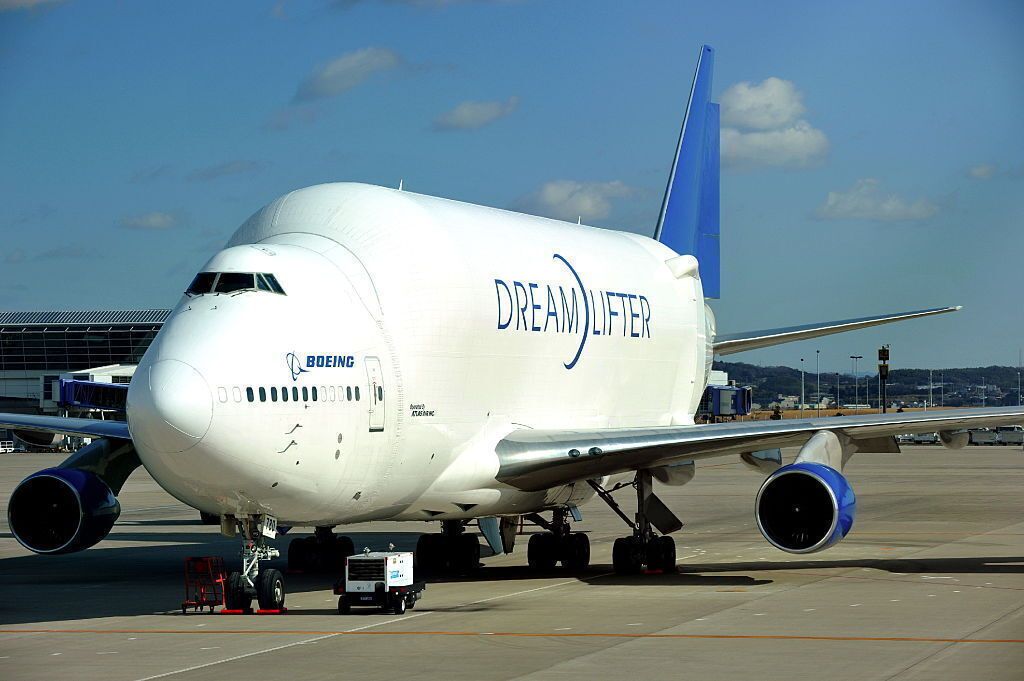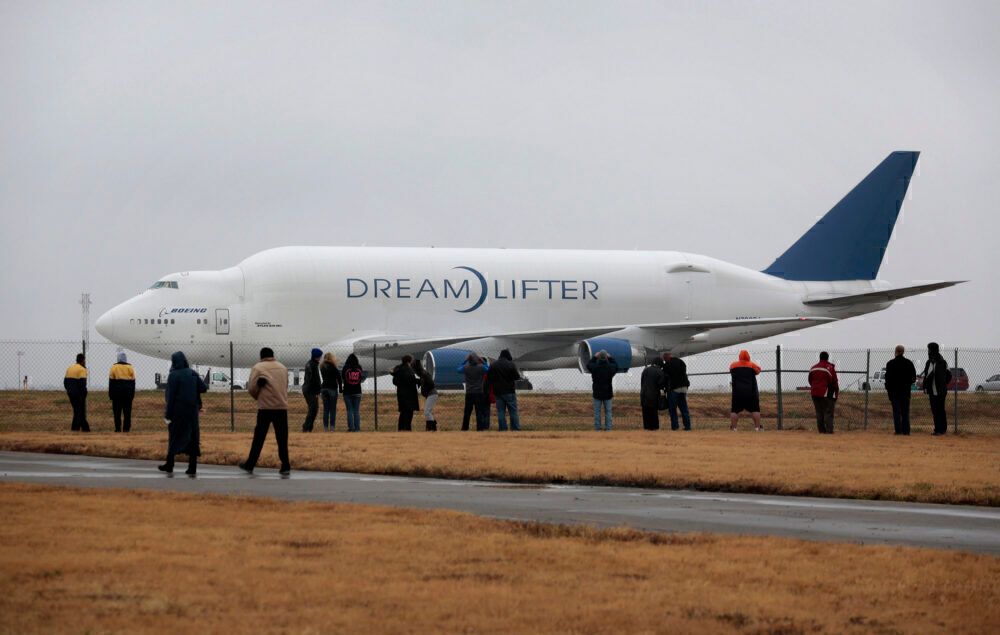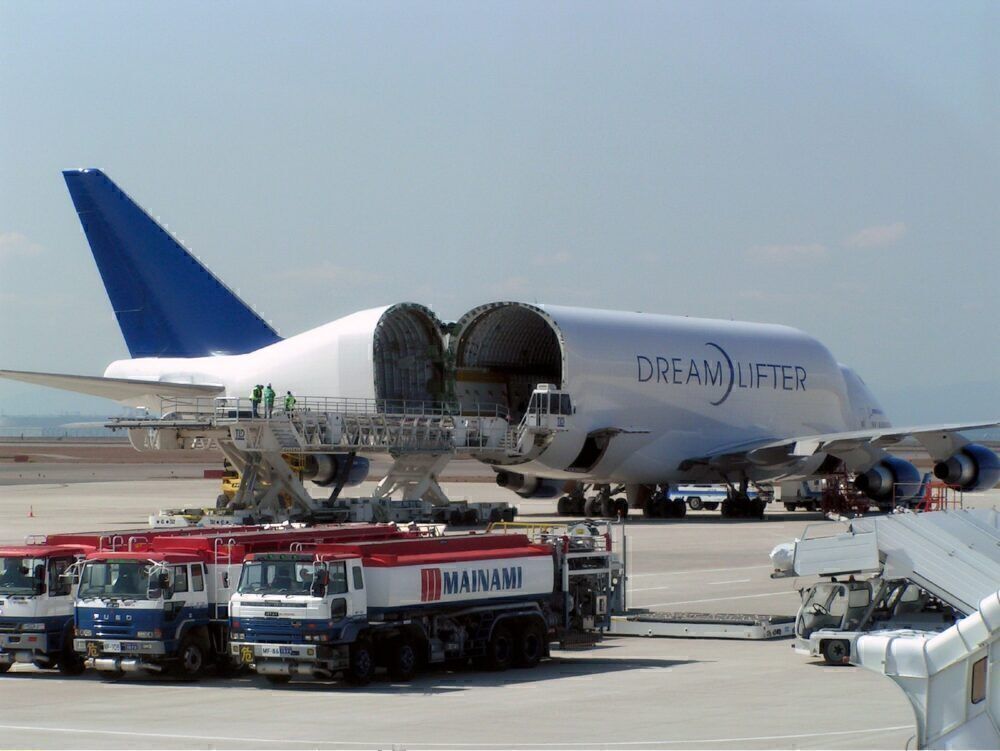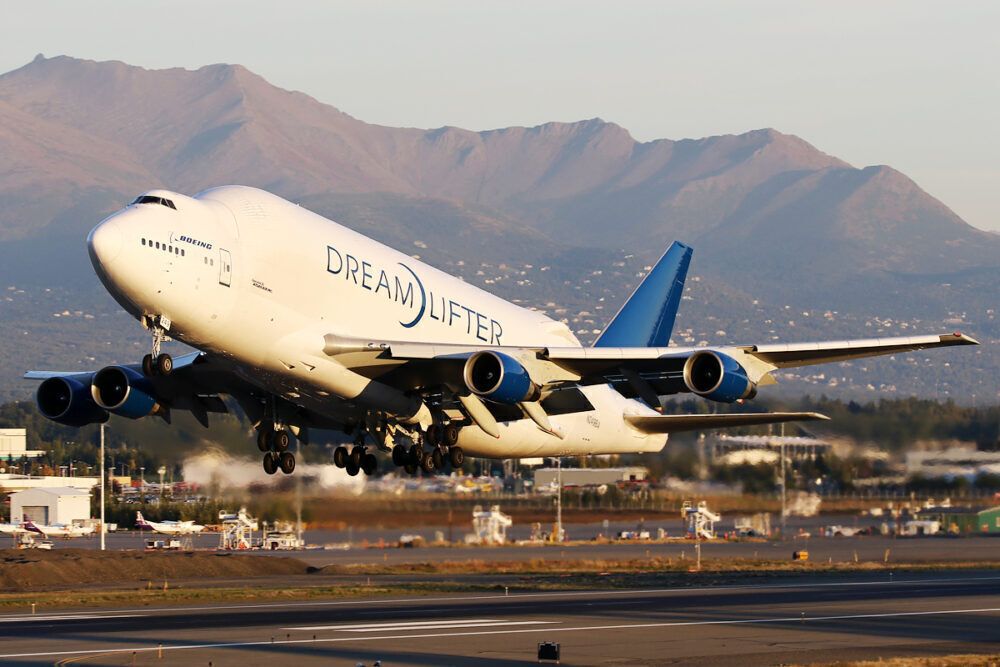While freighter aircraft offer ample room for most goods, some pieces of cargo require that little bit extra when it comes to space. This, and the slow process of land and sea transport, caused Boeing to develop its striking 'Dreamlifter' outsize freighters. These converted 747-400s are responsible for transporting components of other Boeing aircraft, such as the 787 'Dreamliner.' But how did the manufacturer go about converting them?
Why did Boeing need the Dreamlifter?
In the mid-2000s, with the upcoming Boeing 787 'Dreamliner' program nearing production, Boeing began to consider the project's logistics. The aircraft's production provided Boeing with more headaches than previous designs, as its suppliers were located far and wide. Some were situated in Italy and Japan, very distant from its US facilities.
Ferrying components from these countries by land and sea would have been a slow process. As such, Boeing looked to airfreight for answers. However, parts like the 787's wings were too large for the company's 747-400Fs, and even for the colossal Antonov An-225. This meant that Boeing had to tear up the playbook and design its own outsize freighter for the project.
Stay informed: Sign up for our daily and weekly aviation news digests.
Boeing chose not to build new aircraft to form the basis of the Dreamlifter / 747-400 LCF (Large Cargo freighter). Instead, it elected to convert four existing passenger 747-400s. Two came from China Airlines, with one coming from each of Air China and Malaysia Airlines.
The most conspicuous aspect of the conversion is undoubtedly the planes reshaped fuselage. This is far more bulbous than that of typical 747s, and is taller and wider than pre-conversion. This provided the necessary extra space to transport Boeing's outsize cargo. Boeing Rocketdyne played a key role in the conversion, which took place in Taiwan.
The reshaping of the fuselage allowed the aircraft to carry the outsize cargo, but what about loading it. Instead of loading the Dreamlifter through a hinged nose like normal 747 freighters, cargo instead enters through the rear. This is done thanks to an enormous swing tail door, as seen below. Spain's Gamesa Aeronáutica was key to implementing this aspect.
The Dreamlifter's enormous cargo section is not pressurized. Following the conversion process, which saw aspects like the new fuselage shape and tail door be implemented, the first Dreamlifter took its maiden flight in 2006. It entered service a year later, allowing Boeing to transport components from Japan to the US in just eight hours.
The aircraft today
As well as impacting the operations of passenger-carrying flights, the ongoing coronavirus pandemic has also affected aircraft production. The 787 family, in particular, has had a challenging last year or so, with safety issues also prompting reduced production. There have even been instances in which deliveries of the aircraft have stopped altogether.
With this in mind, it is perhaps unsurprising to see that Boeing's usage of its Dreamlifters has fallen compared to pre-COVID. Simple Flying investigated the extent of this drop in utilization in February. Overall, data for the plane's usage showed that, although there have been days when it has matched 2019, the average figure has generally fallen by around 40%.
That being said, it's not as if the global health crisis has rendered the Dreamlifter completely obsolete. Indeed, on multiple occasions, Boeing has put its extra capacity to good use by using it to transport face 500,000 masks to Utah, and PPE to South Carolina.
Did you know about how Boeing converted the four former passenger-carrying 747-400s into its 'Dreamlifter' outsize freighters? Perhaps you've even seen one of these mighty machines on your travels? Let us know your thoughts and experiences in the comments.




